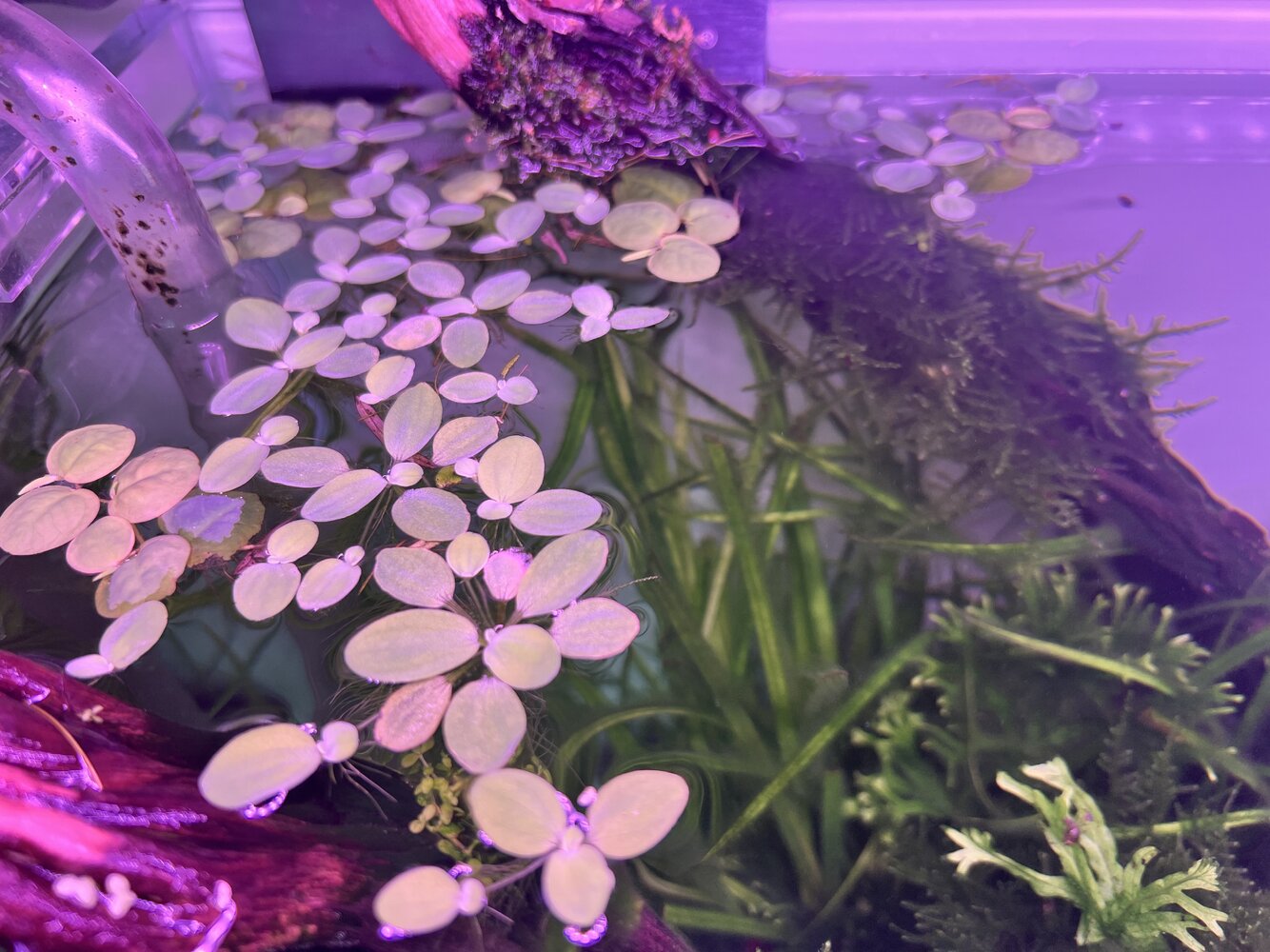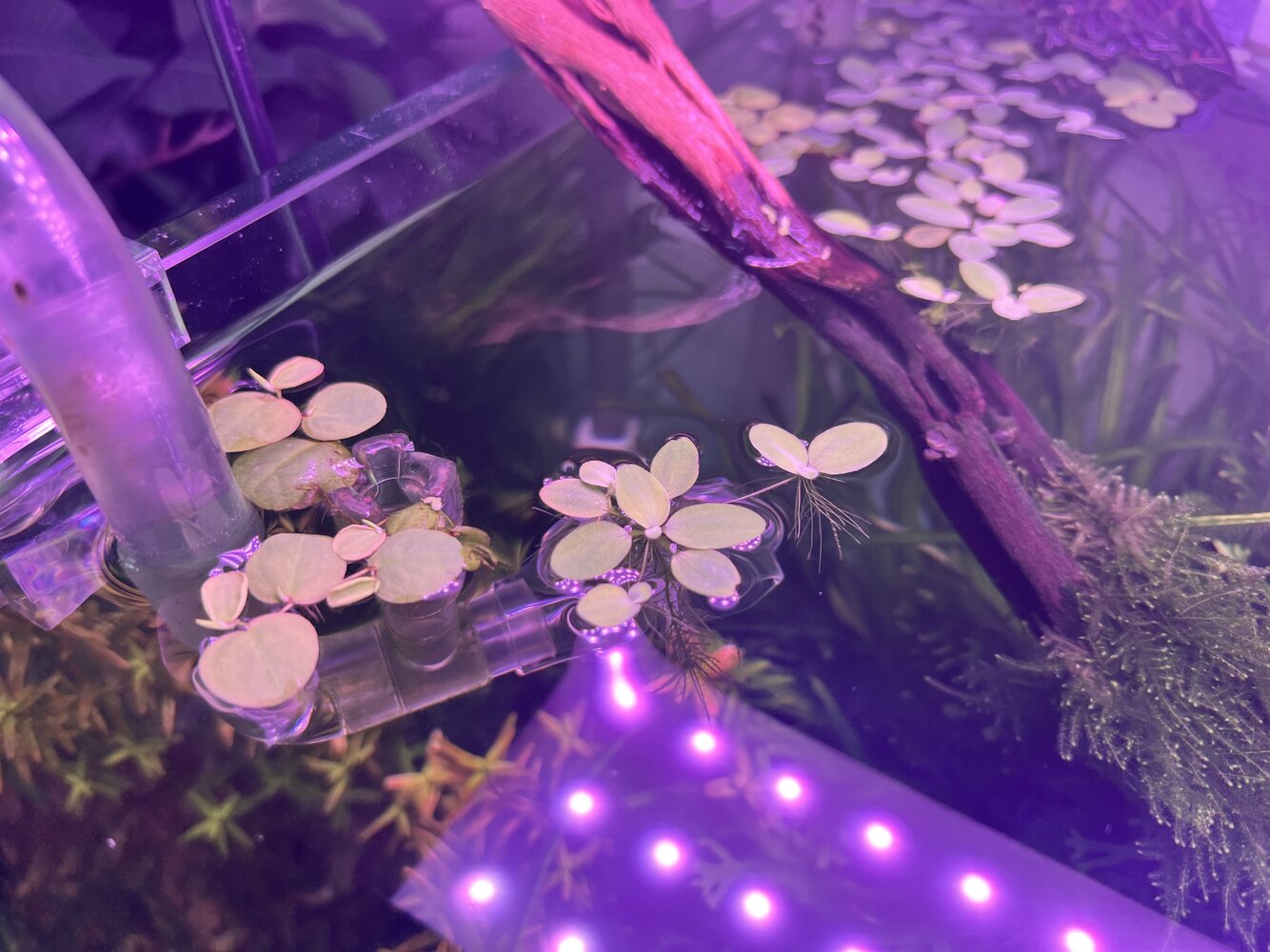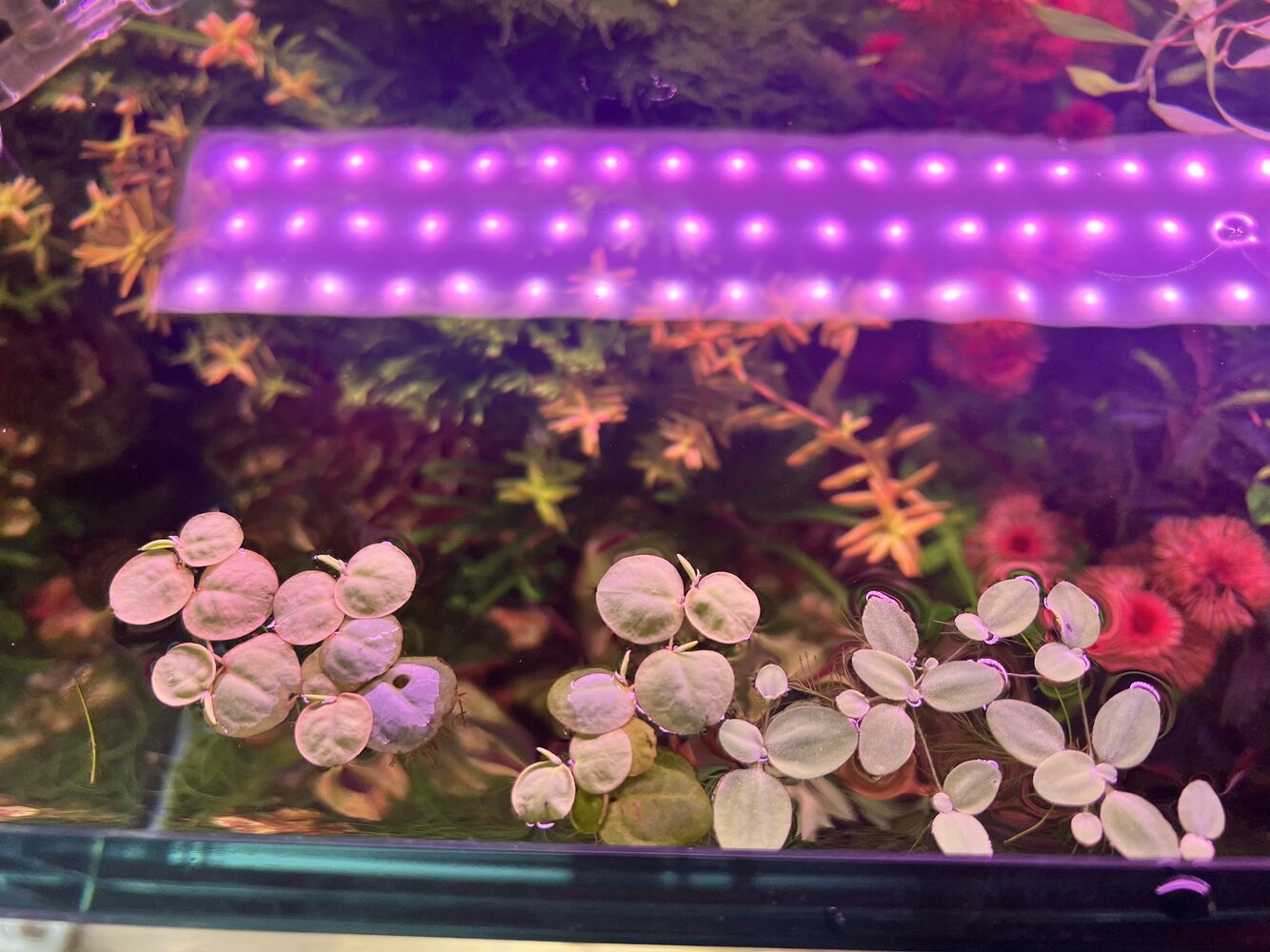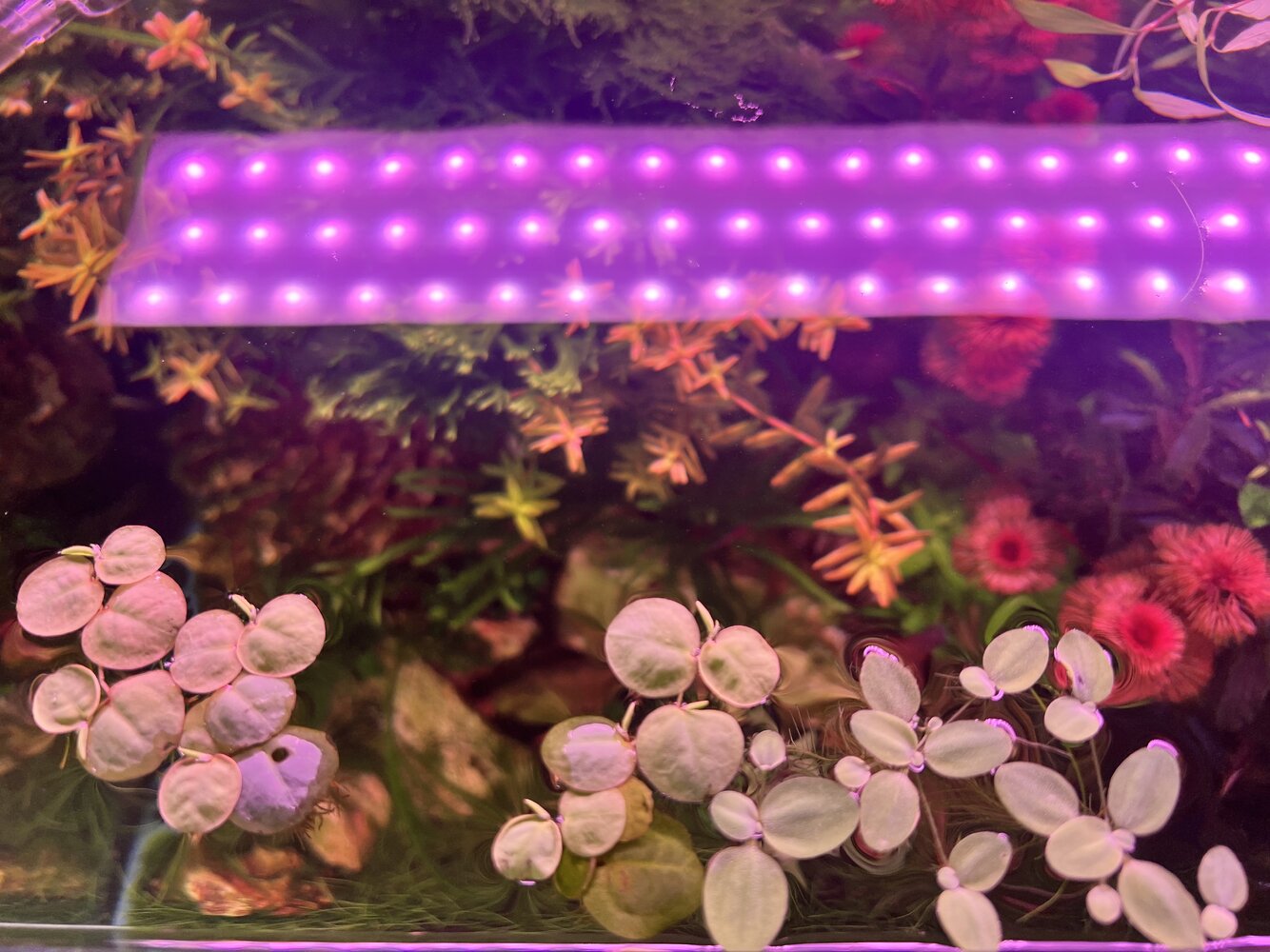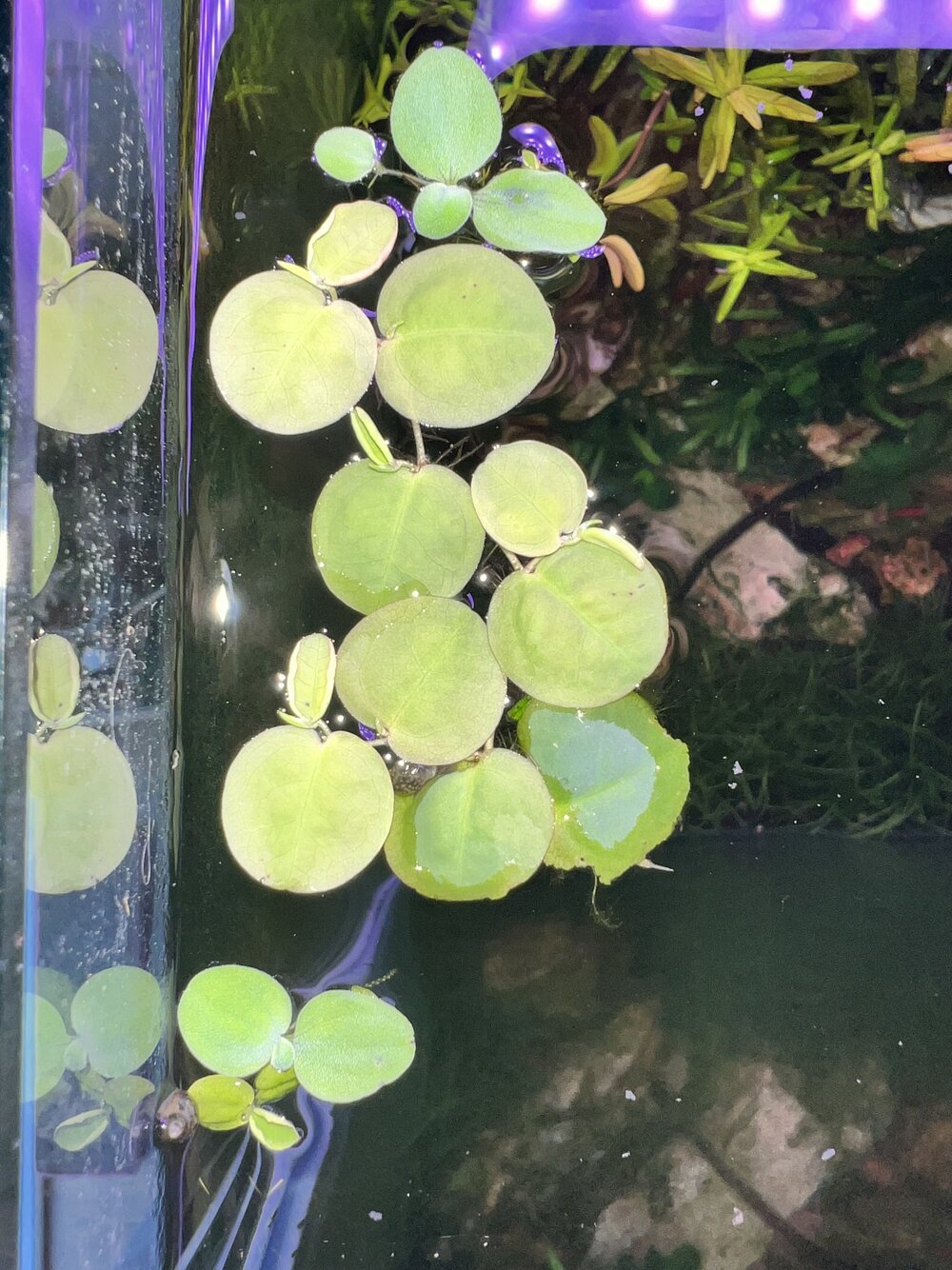neofy705
Member
Hello all,
I'm struggling with some type of hair/fuzz algae that seems to be very aggressive in its growth. It attacks new growth within a day even in fast growing stem plants.
There's no specific area of algae growth, everything is affected, from the substrate to near the surface.
Some plants don't grow as expected. Especially the Alternathera.
My thoughts are:
1) Low plant mass - or not enough fast growing plants
2) Depleted soil - inadequate fertilisation
3) Loads of fish - too much waste
4) Accumulation of detritus in soil due to not gravel vacuuming - loads of shrimplets hiding in soil/hair grass
5) High phosphate/nitrate levels - API nitrate test kit shows red 40-80. Tetra phosphate strip shows 1ppm. Values taken with a pinch of salt.
Plan of action:
1) Ordered fast growing plants - hygrophila corymbosa and red root floaters
2) Reduce photoperiod to 6 hours
3) Ordered nerite snails
4) Decreased TNC Complete dose. Increase TNC Lite dose (same as Complete without NPK)
Any advice?
More info:
I'm dosing "EI" levels of TNC complete and Lite (I know it's not really close to EI).
I run in-line CO2 (ignore drop checker in photo the liquid was just replaced during maintenance), the colour turns yellow.
The soil is Tropica (which admittedly is probably depleted as it's 2 years old - re used from previous scape).
The flow seems adequate, I even tried to reduce it by replacing the lily pipe to a neo reliever as with the lily pipe there was too much movement and excess algae in the high flow areas.
Tank info:
AquaSys 230 -close to 250L
Filter Fluval 407 (only coarse sponges in prefiltering section - rest is full of Matrix)
Light: Chihiros WRGB 2 Pro set at R90 G50 B95 W0
Ph= 6.3 (at lights on) - 7.1 (right before lights on)
Tap water: KH=0, GH=3. Remineralised with Seachem Equilibirium and KH Plus to KH=3 and GH=6.
TDS in tank= 300ppm after wc and 400 before wc (values using 0.67 factor)
Livestock- 15 rummynose, 12 ruby tetras, 5 otos, 2 honey gouramis, 4 guppies, 5 hillstream loaches, 10 corydoras, 7 amanos, 50 cherry shrimps
Maintenance: 50% wc weekly









I'm struggling with some type of hair/fuzz algae that seems to be very aggressive in its growth. It attacks new growth within a day even in fast growing stem plants.
There's no specific area of algae growth, everything is affected, from the substrate to near the surface.
Some plants don't grow as expected. Especially the Alternathera.
My thoughts are:
1) Low plant mass - or not enough fast growing plants
2) Depleted soil - inadequate fertilisation
3) Loads of fish - too much waste
4) Accumulation of detritus in soil due to not gravel vacuuming - loads of shrimplets hiding in soil/hair grass
5) High phosphate/nitrate levels - API nitrate test kit shows red 40-80. Tetra phosphate strip shows 1ppm. Values taken with a pinch of salt.
Plan of action:
1) Ordered fast growing plants - hygrophila corymbosa and red root floaters
2) Reduce photoperiod to 6 hours
3) Ordered nerite snails
4) Decreased TNC Complete dose. Increase TNC Lite dose (same as Complete without NPK)
Any advice?
More info:
I'm dosing "EI" levels of TNC complete and Lite (I know it's not really close to EI).
I run in-line CO2 (ignore drop checker in photo the liquid was just replaced during maintenance), the colour turns yellow.
The soil is Tropica (which admittedly is probably depleted as it's 2 years old - re used from previous scape).
The flow seems adequate, I even tried to reduce it by replacing the lily pipe to a neo reliever as with the lily pipe there was too much movement and excess algae in the high flow areas.
Tank info:
AquaSys 230 -close to 250L
Filter Fluval 407 (only coarse sponges in prefiltering section - rest is full of Matrix)
Light: Chihiros WRGB 2 Pro set at R90 G50 B95 W0
Ph= 6.3 (at lights on) - 7.1 (right before lights on)
Tap water: KH=0, GH=3. Remineralised with Seachem Equilibirium and KH Plus to KH=3 and GH=6.
TDS in tank= 300ppm after wc and 400 before wc (values using 0.67 factor)
Livestock- 15 rummynose, 12 ruby tetras, 5 otos, 2 honey gouramis, 4 guppies, 5 hillstream loaches, 10 corydoras, 7 amanos, 50 cherry shrimps
Maintenance: 50% wc weekly















